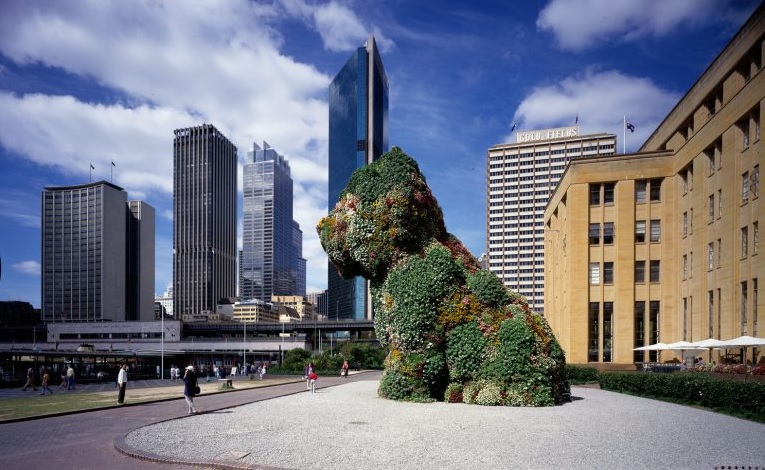If you stand over a certain grate on a fairly innocuous concrete island in Times Square, New York City, you’ll experience something unique and memorable. This grate looks exactly like every other subway grate in the city, a crosshatch of metal that allows the slurry of New York rain and snow to flow down into the sewers and away from the bustling tourist trap that is the neon lit Times Square. Yet, there’s something unique about it that distinguishes it apart from every other subway grate – a low hum emanates from the grate, at once sounding like an impending subway train, but then, once you’ve stood in the sound for thirty seconds or so, you realise it’s something entirely unique. It absorbs you, encompassing your body and mind and oddly washes the loud noise of New York City away from you and places you outside of Times Square. Somehow, you become a character from a JG Ballard novel, existing within the world, and yet, existing without the world.
Five years ago, I stood atop this grate in an empty snow covered Times Square as night embraced the city. New York was oddly quiet that evening, and after an indistinct day between Christmas and New Years, I found myself comforted by this hum. For those who haven’t been to Times Square, it is as energetic and frenetic as you’d imagine. It carries an obnoxious level of excess and endless promotion of things to buy buy buy, and is negatively teeming with people who have no idea what an inside voice is, so for me, when I stood in a disturbingly quiet Times Square as the snow fell patiently onto the pavement, I found a clarity and a fascinating embrace with this sound that has been projected into the city that never sleeps for over forty years.
Designed as an art installation-cum-social experiment by artist Max Neuhaus in 1977, this hum is only noticeable if you actually look out for it. Even if you engage in the activities of being a humble tourist, slack jawed and overwhelmed by the enormity of Times Square, unaware that an art installation is present under your feet, it will still be there, living, day and night, endlessly sounding out into the existence of America.
I think about this sound a lot, how through its unobtrusive presence people unwillingly engage with it daily. I think about how for those who seek it out, it can be a welcome respite from the madness of an ever changing, ever active city. And, I think about how important the presence and existence of public art is. The existence of this sound in New York has tethered a wealth of memories for me to that city, memories that will carry on in my mind longer than many that I would presume to hold as precious.
This moment in my history was brought back with vivid realisation three-quarters of the way through Samantha Lang’s documentary It All Started With a Stale Sandwich, a film about the 50-year history of Kaldor Public Arts Projects, as guided by Hungarian-born Australian, John Kaldor. As the film progresses chronologically through the works that Kaldor Public Arts Projects has put on, we’re presented with a glimpse into the work of performance artist Marina Abramović. For her Marina Abramović: In Residence show in 2015, Abramović created an exhibition space that forced participants and attendees to be present in the moment. The visitors presence in the art space enforced them to abandon their digital worlds for the duration of their visit. Whether that be for ten minutes as they sit staring at a yellow board, or for six hours as they obsessively separate black and white grains of rice, marking down a count of each grain, Abramović had created a space where the visitors were willed into a state of focus.
What, on paper, sounds like work, or the act of tedium, is in fact the opposite. Abramović has long been an artist who has engaged the viewer or visitor with art that challenges, confronts, and transforms those who participate with it. Notably, her performance The Artist is Present piece, which had one person experiencing the act of just sitting and staring in silence at Abramović herself, forced people to sit in silence, and to sit with someone else experiencing the presence of another person. There is a wealth of discussions and explorations about the value of Abramović’s art out there on the internet, and while I’ve not had the privilege of experiencing her work in person, the footage of this exhibition in 2015 drew me back to being centred and focused in Times Square. That hum forced me to focus on myself, and Abramović’s work intends to do the same as well. By putting you in the moment, by making you the art, you then look within yourself to be entertained, informed, engaged, and, most importantly, to get in touch with yourself.
Abramović, and the many other artists who have created works for Kaldor Public Arts Projects, want to present the world in a different light. The art is always extending a hand out to the viewer, encouraging engagement, offering a polite request to view the world a little differently for a while. And this is the glory of someone like John Kaldor. He has created the possibility for a different view point of the world to be experienced on a public level. As is mentioned in the film, there’s an openness to staging these exhibitions in public spaces, away from the prestige of the art museum. Where a painting or a statue in a museum will have the artists name attached to it, and an explanation of what the painting is about, or who the artist is and what this painting or statue means to them, these public art projects are devoid of such a label. This openness means that the art is no longer the artists, but instead, is the publics to engage with, to appreciate, to craft new memories of as it exists in that space for a brief period of time in history.
In turn, when being interviewed for this documentary, John Kaldor requested that the focus be on the artists and the art, and not on him. And while this is a noble request, it’s clear that through the 50-year existence of Kaldor Public Art Projects, John is as important to this narrative as the artists are. The title, It All Started With a Stale Sandwich refers to the lunch that Christo Vladimirov Javacheff and his wife Jeanne-Claude Denat de Guillebon gave John when they first met in a New York studio in 1968. The hum that I affectionately recall when I think of New York hadn’t existed then, and wouldn’t for almost a decade, but I would like to think that Neuhaus’ installation came from the same mind pond that Christo’s Wrapped Coast installation came from.



The exhibition involved blanketing a two-and-a-half kilometre stretch of Little Bay, a remote town on the NSW coast, in fabric and rope. The effect is eerie and quite fascinating to watch unfurl in the documentary. It’s like someone erased a slice of the landscape, pouring a mass of white out over the rocks and omitting their presence from life. At the time, it was the largest single artwork in the world. This was the first of the projects that Kaldor crafted under the Art Project banner, and as an expensive public art installation, caused the consternation of the media and the public. ‘Why isn’t the money being spent on the local hospital?’ was the cry in the media. And, thankfully, Samantha Lang interviews some of the nurses who worked at the local hospital at the time, and their view helps provide a welcome context to the artwork. Some of the nurses hated it, slipping off in the night to cut the ropes, and others loved it.
Part of the joy of watching a film as grand in scope, and yet, completely focused, as It All Started With a Stale Sandwich is experiencing the endless fascination that the subject of the film has for their chosen endeavour. John Kaldor is a wonderful character to spend time with, and his endless enthusiasm and intrigue for art and all its varied forms is positively infectious. As he looks back at the world late-sixties Australia, he laments over the abuse that he and his family received for being ‘foreigners’. They were refugees then, and as such, Australians would inevitably have a go at them for being ‘refos’. John smiles as he tells this story, lamenting that Australia has become a lot more multicultural since then, and there’s certainly a lot more ‘refos’ here now.
In turn, architect Penelope Seidler talks about the difference between then and now, and how the art world, let alone the world in general, simply didn’t know about or accept Indigenous voices. In a well-meaning statement, Seidler says, ‘I’d never seen an aborigine, they weren’t exactly lurking around the north shore’, and then continues to say that she, and many others, have so much to learn and understand about the world. Seidler talks about a different time, a different world, and while it’s clear that art alone has not been the changing force for more Indigenous voices to be heard around the world, it’s clear that it certainly helped in some regards.



